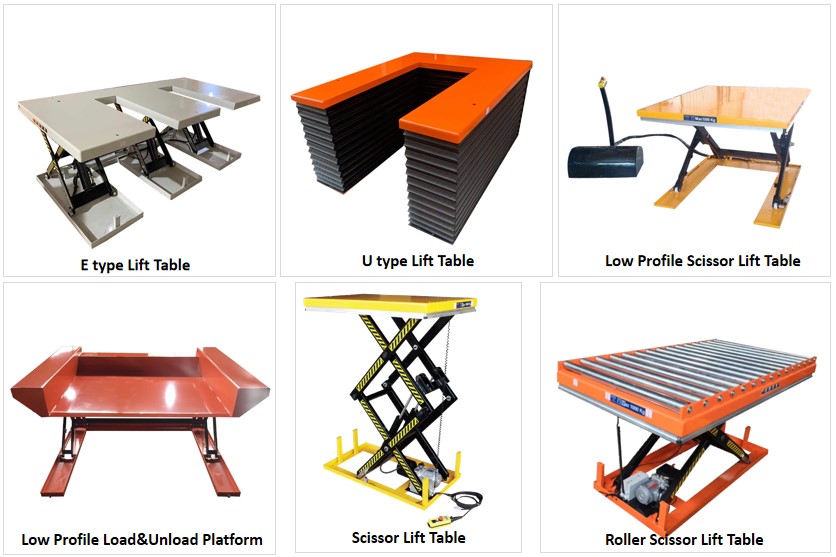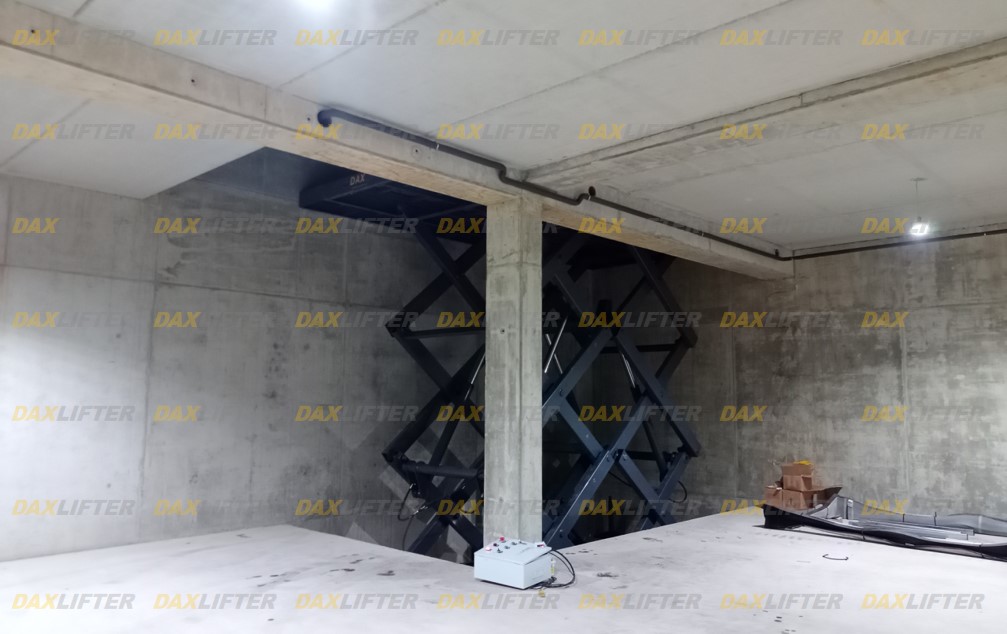In modern industrial settings, scissor lift table have become essential equipment for logistics handling and aerial operations due to their stable and efficient lifting performance. Whether lifting heavy goods or streamlining workflows, these machines—driven by mechanical or hydraulic systems—significantly enhance productivity while ensuring operational safety.
Diverse Designs for Precise Needs
Scissor lift platform are classified based on two core dimensions:
Scissor Structure
From single to four-scissor configurations, users can choose flexibly depending on required lifting height and platform size. Higher or larger platforms typically require more scissors to ensure stability.
The number of hydraulic cylinders directly affects load capacity. During customization, key parameters such as load and lifting height must be clearly defined to maintain a balance between power and safety.
Table Function
1) U/E-shaped lift tables: Ideal for pallet loading and unloading, compatible with forklifts.
2) Roller lift tables: Integrated into assembly lines for seamless material transfer.
3) Spring lift tables: Equipped with self-balancing spring systems to keep the platform at an optimal height during pallet loading and unloading; widely used in logistics warehouses, workshops, and assembly lines.
4) Customized solutions: Such as anti-static tables, tailored for specialized scenarios.
Dual Innovation: Efficiency and Safety
Accelerated Production Workflow
By replacing manual handling with mechanical lifting, lifting platform reduce material turnover time—especially beneficial in high-frequency warehousing and production operations.
Comprehensive Safety Features
Standard guardrails, anti-pinch bellows, emergency braking systems, and other safety components help prevent fall risks. The stable lifting mechanism also minimizes the risk of cargo toppling or injury due to shaking.
Cross-Industry Application Potential
From transferring components on automobile assembly lines to showcasing products across floors in retail settings, scissor lifting platform integrate seamlessly into various industries through modular design. For instance, a car dealership may use a custom lift platform to vertically transport vehicles from the warehouse to the showroom—saving both space and labor costs.
Guide to Customized Selection
Define Requirements Clearly
Key parameters such as load capacity (e.g., 1–20 tons), lifting height (0.5–15 meters), and usage frequency (intermittent or continuous) must be carefully assessed.
Match the Scenario
1) For logistics and warehousing: high-load roller tables are recommended.
2) For manufacturing: ergonomic platforms with adjustable height are preferred.
3) For specialized environments (e.g., food factories): stainless steel structures with clean, oil-free chains are ideal.
As a silent force behind industrial upgrading, the scissor lift table is more than just a tool—it is a strategic partner in achieving lean production. Through tailored design and technological innovation, it continues to drive both safety advancements and efficiency gains. Investing in the right lifting solution injects long-term “upward momentum” into your company’s operational future.
Post time: Jul-11-2025


